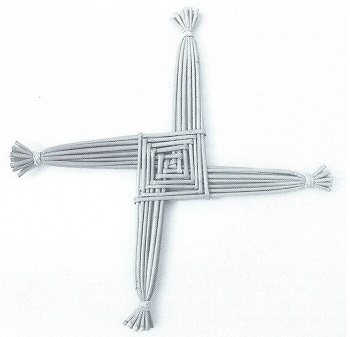
Anthony Raftery (Antaine Ó Raiftearaí), who was born in Killedan (Cill Liadáin) between Kiltamagh and Bohola, County Mayo, Ireland, about 1779, is described as ‘the last of the wandering Gaelic bards’. His father was a cottier and a weaver at Killedan House, home of the local landlord, Frank Taaffe, and his mother, née Brennan, came from the area. After attending a hedge school for a few years, he contracted smallpox at the age of nine, which left him without sight. His eight siblings are said to have died in childhood with it. Anthony began to play the fiddle but never became a good musician. He was a regular visitor in Killedan House, and one day took one of Frank Taaffe’s horses for a trip to Kiltamagh. The horse fell and broke its neck, which made the owner very angry. It is said that Taaffe banished Raftery from Killedan. Whether the story is true or not, Anthony Raftery left County Mayo and spent the rest of his life wandering the roads of Galway, visiting house after house, bringing the news of the day, reciting his poems, playing his fiddle, drinking, and talking about his experiences. He is said to have attended a hedge school in Ballylee, County Galway, and had books read to him. He had two children with his partner, Siobhán.
Raftery could not write, but his poems were preserved in the oral tradition of the people of the Athenry/Gort/Loughrea district of East and South Galway. His poems were recited at weddings, wakes, on special occasions, and around many firesides. These were polemical with a strong historical, political and religious content. A few people recorded his poetry in manuscripts, most of which were later collected by Lady Augusta Gregory (1852-1932), who gave them to the Irish scholar, Dr Dubhglás de hÍde (Dr Douglas Hyde). Hyde published thirty-two of Raftery’s poems in Irish, with English translations and background information in ‘Songs Ascribed to Raftery’, the fifth chapter of The Songs of Connacht (1903). Raftery’s poems and ballads include attacks on those who tried to suppress rural agitation (Na Buachaillí Bána /The Whiteboys); celebrations of contemporary events such as Daniel O’Connell’s election victory in Clare, 1828, which led to Catholic Emancipation a year later (Bua Uí Chonaill /O’Connell’s Victory); pieces in praise of pretty women with whom he was besotted, in spite of his visual impairment (Máire Ní Eidhin/Mary Hynes and Brídín Bhéasaí /Breedgeen Vesey; singing the praises of tradesmen (An Gréasaí /The Shoemaker), and lamenting some nineteen people tragically drowned in Lough Corrib between Annaghdown and Galway in 1828 (Eanach Dhúin/Annaghdown). There is an astonishingly-detailed summary of Irish history containing more than 400 lines (Seanchas na Sceiche/Traditional lore with the Bush) and a confession of the poet’s many sins (Aithrí Raiftearaí /Raftery’s Repentance). In Mayo his best -known poem is Contae Mhaigh Eo (County Mayo) or Cill Liadáin, in which he sings the praises of his native place:
‘Killedan (is) the village in which everything grows;
There are blackberries and raspberries in it, and fruit of every kind’,..
Translation by Douglas Hyde
There is some doubt about the provenance of his best-known poem Mise Raiftearaí /I am Raftery, which laments his life as a blind man, with his back to the wall, ‘playing music unto empty pockets’. It was published by Seán Ó Ceallaigh, a native of Loughrea living in Oswego, New York State, in the journal An Gaodhal in 1882; it is thought to have derived from material in folk memory relating to Raftery. It was later credited by Douglas Hyde to Raftery himself. Anthony Raftery died on December 24, 1835, and was buried in Killeeneen cemetery between Kilcolgan and Craughwell in County Galway. Lady Gregory was responsible for the erection of a headstone on his grave which was unveiled on August26, 1900. The big attendance included not alone Lady Gregory, but also other major figures from the Irish cultural renaissance like W. B. Yeats, Edward Martyn and Douglas Hyde. In 1985, a granite memorial was erected in his honour in Kiltamagh.

